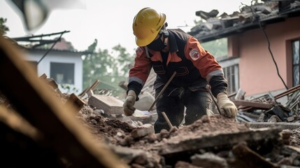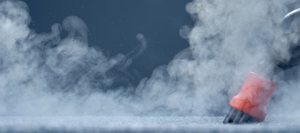Restore Draper is a complex process. When it comes to water damage repair, many items need to be replaced – from building materials like drywall and insulation to personal belongings such as clothes, books and artwork.
The first step in the restoration process is mitigation. This involves moving and storing items away from the water source.

Damage restoration professionals are trained to work with the most advanced equipment and techniques. They are experienced in handling the restoration process quickly and efficiently, which helps reduce business downtime. Additionally, they understand the importance of taking swift action in order to avoid additional damage and health hazards such as mold growth. This also increases the chances of salvaging belongings that have either financial or sentimental value. They also know how to work with insurance companies and can help you obtain the right amount of coverage for your property.
Professionals in damage restoration are skilled in using the newest tools and methods. They have the expertise to complete the restoration process fast and effectively, which minimizes interruptions to business operations. They also recognize the significance of acting quickly to prevent more harm and health risks like the growth of mold. Additionally, this raises the possibility of preserving items with sentimental or monetary value. They can assist you in obtaining the appropriate level of coverage for your property and are skilled in interacting with insurance companies.
Certifications are an important way to set yourself apart from your competitors and show that you and your employees have the knowledge to perform your work in a professional manner. Having these credentials may be a requirement to take on certain jobs, such as those for banks or government agencies, and can help you secure more business. It is also an excellent way to gain customer trust, and helps keep your employees safe while on the job.
Obtaining certifications is a crucial strategy for differentiating yourself from the competition and demonstrating to your staff that you and they are qualified to carry out tasks in a professional manner. Possessing these qualifications can help you land more business and may be necessary to accept certain positions, like those for banks or government organizations. It also contributes to the safety of your employees while they work, which is a great way to win over customers.
Getting certified is an essential way to set yourself apart from the competition and show your employees that you and they are capable of handling tasks in a professional manner. Having these credentials can help you get more work and might be required to take certain jobs, such as government or bank positions. Additionally, it helps to ensure the safety of your staff members while they work, which is a terrific method to win over clients.
An organization or individual needs to pass a number of courses and exams to become an IICRC certified contractor. This procedure is intended to assess the employee’s technical restoration abilities as well as their customer service prowess. This indicates that an organization that has earned IICRC certification places a high priority on both worker safety and work product quality.
In order to become an IICRC certified contractor, a company or individual must successfully complete a number of courses and exams. This procedure is intended to assess the employee’s technical restoration abilities as well as their customer service prowess. This shows that a company that has obtained IICRC certification values worker safety and the quality of its output highly.
In order to become IICRC certified, a company or individual must pass various classes and tests. This process is designed to test both the technical aspects of restoration and the customer service skills of the employee. This means that a company with IICRC certification has a strong focus on the quality of its work and the safety of its employees.
The IICRC offers a variety of classes, including Water Damage Restoration Technician (WRT), Applied Structural Drying Technician (ASD), and Mold Remediation Technician (MRT). The WRT course is the foundation for any remediation work in any industry and is designed to teach professionals how to deal with water losses and the various techniques for drying structures. The ASD course focuses on the proper methods for cleaning, disinfecting and caring for the structure after damage has occurred.
Any restoration business must have the proper credentials, but businesses that provide disaster restoration services should take extra care. Different disasters occur in different parts of the country, and these various disasters call for different restoration and remediation techniques. Furthermore, certain states mandate that businesses providing restoration services obtain a license, and certain of these licenses call for the business to be IICRC certified.
The IICRC’s Applied Microbial Remediation Technician (AMRT) course, which trains experts in identifying and treating mold contamination, is another well-liked course. For those working in the restoration industry, this is an invaluable course that will help your company secure more high-profile contracts.
Another popular class is the IICRC’s Applied Microbial Remediation Technician (AMRT) course, which teaches professionals how to identify poor indoor air quality and treat mold contamination. This is a valuable course for anyone in the restoration industry, as it can greatly increase your business’s ability to land more high-level contracts.
The IICRC is a non-profit organization that issues certifications for companies in the inspection, cleaning and restoration industries. Its standards are widely used by restorers, and its certifications can provide a great deal of credibility for your business.
Having the correct credentials is essential for any restoration company, but it is especially important for companies that offer disaster restoration services. Different parts of the country experience different types of disasters, and these different disasters require specialized restoration and remediation procedures. In addition, some states have licensing requirements for companies that offer restoration services, and some of these licenses require that the company has IICRC certification.
The Applied Microbial Remediation Technician (AMRT) course offered by the IICRC is another well-liked program that trains professionals in the detection and treatment of mold contamination and poor indoor air quality. If you work in the restoration industry, this is a great course to take because it will help your company get more high-level contracts.
When choosing a damage restoration company, the homeowner should consider whether they have extensive experience in both the mitigation and rebuilding process. A reputable company will offer all services under one roof, thereby saving the homeowner both time and money.
Commercial property repair requires an understanding of different types of materials and structures. A specialist in commercial restoration will be familiar with the guidelines and regulations that apply to the area, and they will understand how to best restore a building after an incident.
Another crucial aspect of a restoration company is their customer service. Seek for a business that offers a 24/7 emergency line. In addition, they ought to be able to tell you about the restoration procedure—what’s involved and how long it will take.
The customer service of a restoration company is also important. Look for a company with an emergency line that can be reached 24/7. They should also be able to provide information about the restoration process, including what is included and how long it will take.
Repairing commercial property necessitates knowledge of various materials and constructions. A commercial restoration specialist will know the rules and ordinances that are relevant to the area and will know the best ways to restore a building following an incident.
Having the right insurance coverage is crucial in a restoration project. It will help pay for any expenses incurred during the restoration process if the work isn’t completed for some reason. Additionally, having business interruption and extra expense coverages can help businesses get back up and running faster after damage. Based on the information you provide and site observations, Tuckey Restoration will create an estimate for the services needed to restore your property. This typically takes one to five days.
